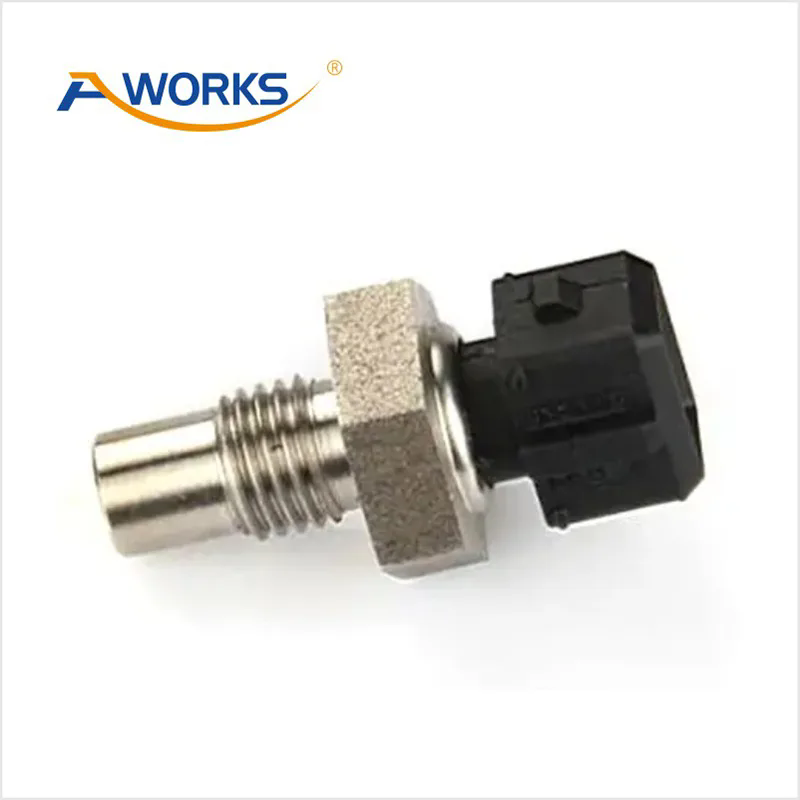Functions of Car Temperature Sensor
2024-05-23
A car temperature sensor, also known as a coolant temperature sensor or engine temperature sensor, is a crucial component of a vehicle's engine management system. It monitors the temperature of the engine coolant and provides data to the engine control unit (ECU) to regulate fuel injection, ignition timing, and other engine functions. Here's an overview of car temperature sensors, including their functions, types, locations, and potential issues:
Functions
1. Temperature Monitoring:
- The primary function of a car temperature sensor is to monitor the temperature of the engine coolant. This data helps the ECU adjust engine parameters to optimize performance, fuel efficiency, and emissions.
2. Engine Protection:
- The temperature sensor plays a vital role in preventing engine overheating by alerting the driver or activating cooling systems such as the radiator fan or coolant circulation pump when temperatures rise above safe levels.
3. Cold Start Enrichment:
- In cold weather conditions, the temperature sensor provides data to the ECU to enrich the fuel mixture during engine startup, ensuring smooth and efficient operation until the engine reaches optimal operating temperature.
4. Emissions Control:
- The temperature sensor contributes to emissions control by helping the ECU maintain the engine at the ideal operating temperature, which promotes efficient combustion and reduces emissions of pollutants such as nitrogen oxides (NOx).
Types
1. Thermistor Sensor:
- Thermistor sensors are the most common type used in modern vehicles. They utilize a thermistor, a type of temperature-sensitive resistor, to measure changes in resistance with temperature variations.
2. Thermocouple Sensor:
- Thermocouple sensors generate a voltage signal proportional to the temperature difference between two dissimilar metals. While less common in automotive applications, they offer robustness and durability in extreme conditions.
Locations
1. Cylinder Head:
- Many vehicles have a temperature sensor located on the cylinder head or engine block, where it can directly measure the temperature of the coolant circulating through the engine.
2. Thermostat Housing:
- In some vehicles, the temperature sensor is integrated into the thermostat housing, which is located near the engine block and connected to the cooling system.
3. Radiator Outlet:
- Some vehicles feature a temperature sensor positioned at the outlet of the radiator, where it monitors the temperature of the coolant as it leaves the radiator and re-enters the engine.
Potential Issues
1. Faulty Sensor:
- A malfunctioning temperature sensor can provide inaccurate temperature readings to the ECU, leading to incorrect engine management decisions, such as fuel mixture adjustments or cooling system activation.
2. Wiring or Connector Issues:
- Corroded, damaged, or loose wiring connections to the temperature sensor can result in erratic sensor readings or complete sensor failure. Proper inspection and maintenance of electrical connections are essential.
3. Cooling System Problems:
- Temperature sensor issues may also be indicative of underlying cooling system problems, such as a malfunctioning thermostat, air pockets in the coolant system, or coolant leaks.
4. Engine Overheating or Misfires:
- A failed temperature sensor that erroneously reports low coolant temperatures may prevent the cooling system from activating, leading to engine overheating. Conversely, a sensor indicating excessively high temperatures may cause the ECU to initiate engine protection measures, such as misfire prevention or engine shutdown.
Conclusion
Car temperature sensors are critical components of a vehicle's engine management system, providing essential data for optimizing engine performance, protecting against overheating, and controlling emissions. Regular inspection, maintenance, and troubleshooting of temperature sensor issues are essential for ensuring the reliable operation of the engine and cooling system. By monitoring temperature sensor readings and addressing any abnormalities promptly, drivers can maintain optimal engine performance, fuel efficiency, and reliability in their vehicles.



